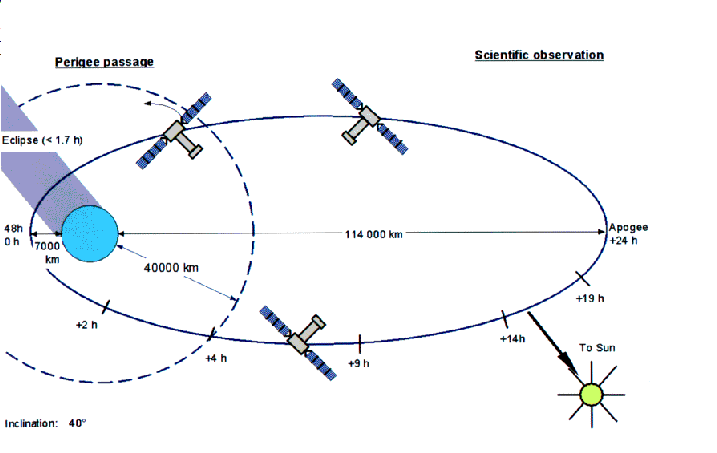XMM will be launched by an Ariane 5 launcher into an highly elliptical
orbit, with an apogee of about 114,000 km and a perigee of ca. 7000 km
(the minimum elevation for science observations will be 40,000 km; see
Fig. 78). The orbital inclination is ![]() ,
the right
ascension of ascending node is
,
the right
ascension of ascending node is ![]() and the argument of perigee
and the argument of perigee
![]() .
Such an orbit provides the best visibility in the southern
celestial hemisphere. The numbers provided here are based on a launch
date of 2000 January 21.
.
Such an orbit provides the best visibility in the southern
celestial hemisphere. The numbers provided here are based on a launch
date of 2000 January 21.
 |
Note that objects will not be continuously observable during the entire visibility period in an orbit due to an apogee telemetry gap, which splits each orbit into two visibility periods of up to ca. 70 ks. This gap is caused by a gap in ground station contact. XMM is operated with two ground stations, located at Perth and Kourou. The approximate location of the apogee telemetry gap is presented in Fig. 79. More details are provided in § 4.2.2 (see also § 4.2.5).